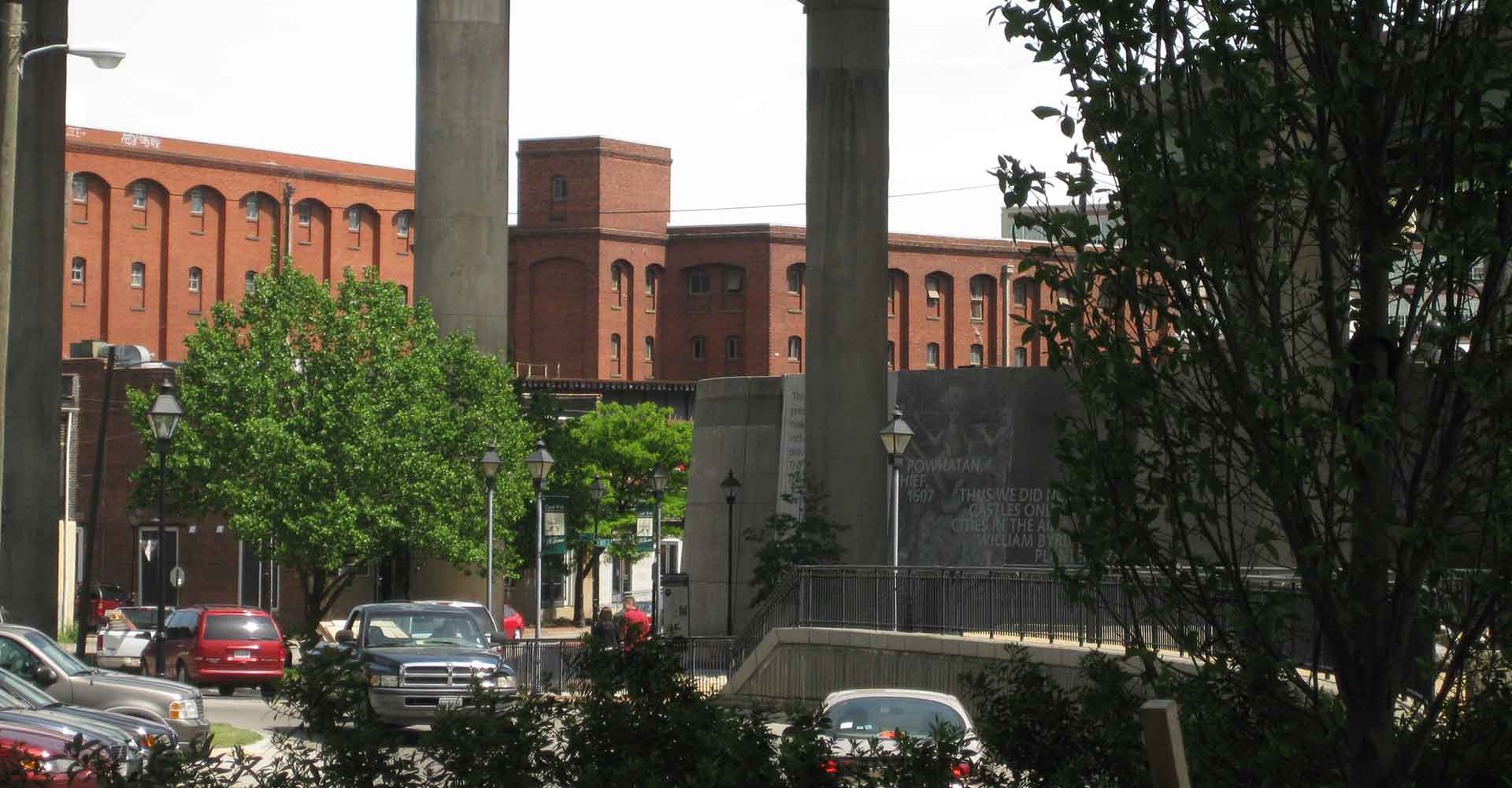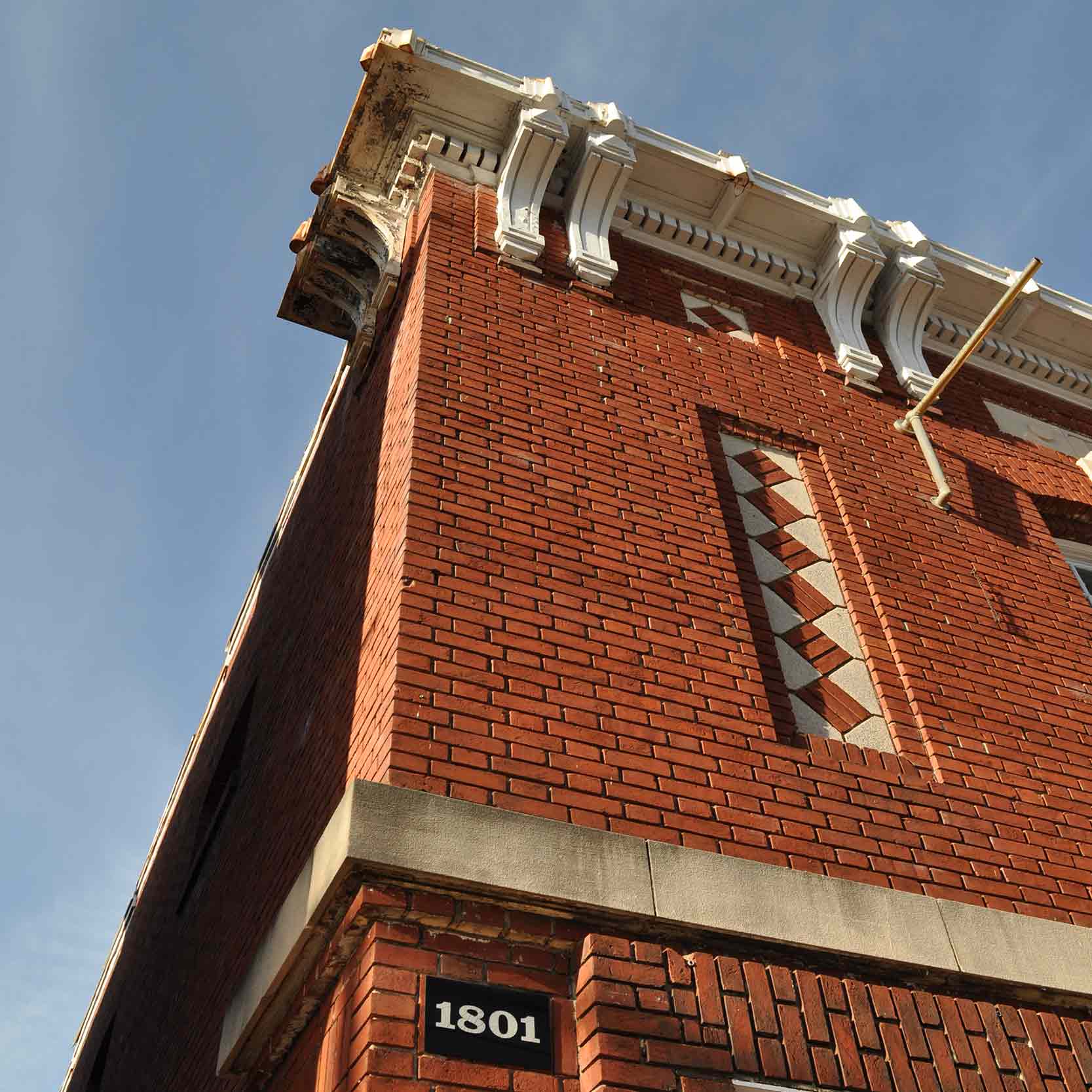The 1717 Design Group Moves
to 1801 East Broad Street
Richmond, Virginia
It is bittersweet news to announce that after 22 incredible years at 1717 East Cary Street, we have sold our historic building and leased a new studio four blocks north in the equally historic Branch Public Baths building.
It was both a pleasure and an honor to have been the steward of such an architecturally significant property for over two decades. We first fell in love with the five‐story brick and heavy‐timber warehouse at 1717 East Cary Street in 1994. We purchased it from Philip Morris Companies who was still using it for storage, did a major renovation of the first floor to convert it into studio space, and renamed the company after the street address. It was an inspiring work space for our staff and we designed more than a hundred signature exhibitions there for such distinguished clients as the Washington Monument, The National Cowboy and Western Heritage Museum, The NCAA Hall of Champions, and the Colonial Williamsburg Foundation. In early 2016 we had a unique opportunity to sell the building to a group of investors with the resources to develop the entire building for an initiative that will not only jump start Shockoe Bottom businesses but also transform early‐stage companies across all of central Virginia. We are excited to know the building will be enjoyed by so many people for many years to come.
We say goodbye to our old home at 1717 and look forward to what our new location at 1801 will bring. For those interested, here is a brief history of the two buildings.
1717 East Cary Street
Originally known as the Virginia Bonded Warehouse, it was built by the C&O Railway around 1917 to serve as a customs warehouse offering secure, duty‐free storage for imported goods from around the world. Its strategic location provided a vital link between the ocean‐going ships docked along the adjacent Kanawa Canal and the C&O's extensive rail network that, by then, stretched all the way to Chicago and its great railway hub. In 1967 the significance of the building was recognized by the Virginia Historic Landmarks Commission who submitted it to HABS (Historic American Building Survey)—a program administered through cooperative agreements with the National Park Service, the Library of Congress, and the private sector. The program now contains surveys of more than 38,600 historic structures and sites in the United States. 1717 East Cary Street was selected because it “stands as an excellent example of the sparingly ornamental yet functional designed commercial structure of the turn‐of‐the‐century that served as both the forerunner and inspiration for the International Style. The series of recesses on each front gives this otherwise massive reddish‐orange masonry block a lightness and verticality which is counter‐balanced by the refined cornice surrounding the whole. The recesses and piers also give the building a monumental yet passive character—one reflecting the function of the building, a storehouse in which no regular activity takes place.” The full survey is available online here.
1801 East Broad Street
As described by Eric Huffstutler in his article “Branch Public Baths” published in The Church Hill Association Community Newsletter, this building played an unique role in early Richmond history. “. . . Petersburg native John Patteson Branch (1830–1915) . . . was president of his family's business as well as the Merchants National Bank of Richmond. One of the richest men in Virginia, Branch was a passionate financial giver towards causes that appealed to him which included public health and sanitation. Building Permit #477 was issued on March 19, 1908 for Branch Public Baths (No. 1). Baltimore architects Archer & Allen . . . prepared the plans for a Free Colonial style building to be built at 1801 E. Broad Street. . . . Opening ceremonies took place on January 30, 1909. . . The 24 slate covered units to bathe in were made up of 17 showers on the west side for men and 5 showers and 2 tubs for women on the east side, all on the second floor. It cost 5 cents per adult for soap and a towel or 3 cents for children. There was a fully equipped Laundry on the street level that could be used at 5 cents per hour which included heated dryers. For those who could not pay it was free. There were 87 patrons on opening day which rose to over 53,000 each year with the majority being men. To help stay within budget, the unused portions of soap cakes were thrown into a bucket of water to wash down the floors. . . . By 1949, homes were being built with indoor plumbing and older homes retrofitted while some still had outdoor fixtures within the city limits as late as 1965. There were still clusters of the population that relied on a weekly bath but not enough to justify running the bath houses at a loss. Attendance had dropped in half from the previous year and continued to plummet.” In 1950, an ordinance was passed to permanently close the bath. In 2005, the Virginia Department of Historic Resources erected a highway marker in front of the building celebrating its historic significance. The full article is available online here.

